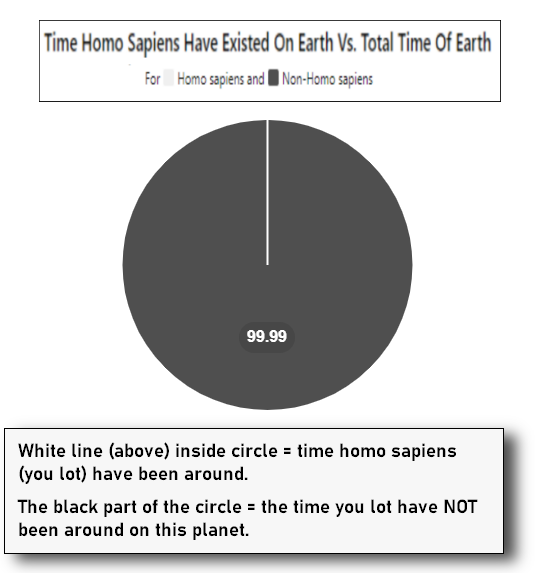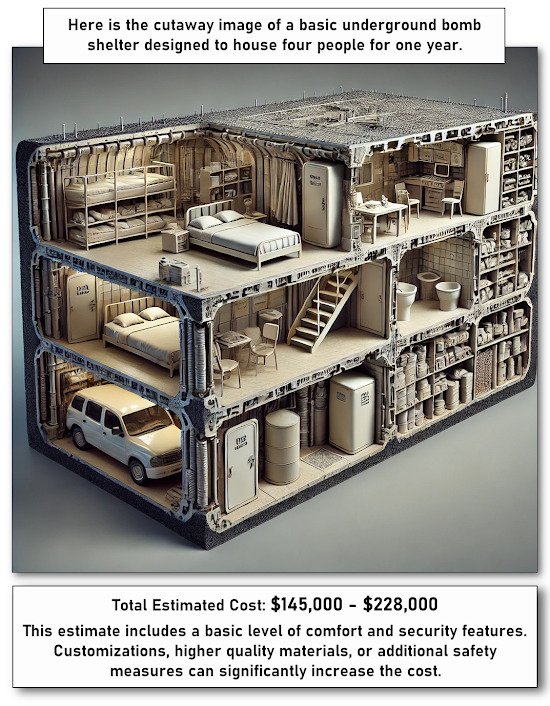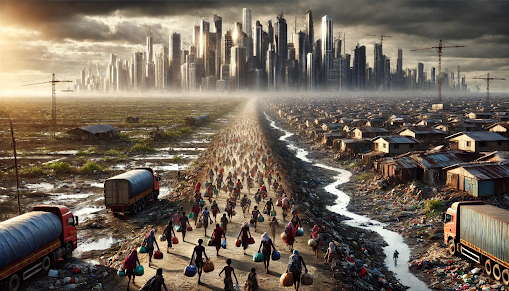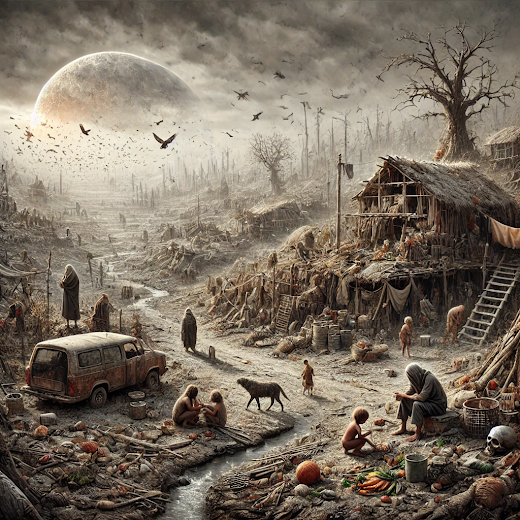Prepare For What is Coming
Your species is a conflicted collective.
But what about all the migrants we got showing up right now? Is that gonna get worse? it's already bad enough in most places.
Report on Migration Due to Ecosystem Failures (2024-2044)
The arrival of the Age of the Warlord.
As the pollution worsens and the storms get larger and last longer, the cycle of natural chaos increases. Whatever forests that have not burned are killed by drought. And whatever land once fertile and green, now shriveled and dead.
Report: Probable Mechanical Failures and Their Consequences from Ecosystem Collapse (Years 1-20)
Okay. So what about global eco system collapse?
Factors Leading to Ecosystem Collapse
Recipe for Disaster
Mitigation Strategies
You can fly over all the really poor people who will work cheap and that way you can make money. A lot of money, IF you do it right.
But "The Warning" is all about being brutally realistic.
You read the next part and tell me if this hopeful to-do list is likely to be followed and accomplished.
Let's talk about how to NOT collapse the last bit of functioning global ecosystems.
Conservation Efforts ---> YES, it takes EFFORT to conserve what you have left to destroy.
(Mother Nature: She is the one who is Nature's Mother.)
And so what will life be like for the typical average American USA family, starting from Year One to Year Twenty of a global ecosystem collapse?
A Day in the Life: Year 20 After Global Ecosystem Collapse
Now here is a brief glimpse of a typical day during the onset of global ecosystem failure.
Now how about the next fifty years or so?
How GOOD is it going to get?
Estimated Temperature Increases in Gulf Region Countries Over the Next 50 Years
Yeah, great. But what is life going to be like for an average family living in Saudi Arabia 20 years after the coming global ecosystem collapse?
Estimated Temperature Increases in the Hottest City in the USA Over the Next 50 Years
Yeah, okay. Great. But what about air conditioning? That'll keep us all nice and cool. So you can take your rising heat levels and I'll just stay indoors where it is nice and cool.
And how are you going to air-condition all the asphalt roads?
When Air Conditioning Starts to NOT Work.
What Will It Feel Like in the Middle East?
Imagine stepping into your home after a long, exhausting day in the searing heat of the Gulf region, expecting the usual rush of cool air to greet you. Instead, you're met with an oppressive wave of heat, as if you've just walked into an oven. The air conditioning, your lifeline against the relentless sun, has failed. Instantly, you feel a trickle of sweat run down your back, your shirt sticking to your skin.
The temperature inside climbs rapidly, transforming your once-comfortable living room into a stifling box. Breathing becomes labored as the hot air feels thick, almost tangible. Every breath you take in feels like inhaling through a hot, damp cloth, offering no relief to your parched throat. Your body starts to react; you feel sluggish, your heart races, and a pounding headache begins to set in from the relentless heat.
You head to the kitchen, hoping to find some cool water, but even that offers little comfort. The tap water is lukewarm, doing little to quench your thirst or cool you down. You splash some on your face, but it evaporates almost instantly, leaving a salty residue from your sweat.
In the bedroom, the sheets feel like they've been left out in the sun. Lying down provides no respite; the mattress is warm, and the ceiling fan merely circulates hot air. You toss and turn, unable to escape the heat. Sleep becomes a distant dream as the temperature continues to rise, and the humidity makes the air feel sticky and suffocating.
Every movement feels like a chore. Simple tasks like cooking or even standing up to fetch a glass of water require immense effort. Your clothes cling to you, damp with sweat. The constant heat and discomfort drain your energy, leaving you irritable and fatigued.
Your mind races with worry about what this means for tomorrow and the days to come. The thought of spending another day in such conditions is daunting. You remember hearing warnings about the increasing frequency of heatwaves and the strain on power grids, but experiencing it firsthand is far more brutal than you ever imagined.
In moments like these, you realize how crucial air conditioning has become in your life, not just for comfort but for survival. The thought of the next 20 years, with even hotter days and more frequent failures, fills you with dread. You ponder if there will be technological advancements to cope with such extremes or if this is just the beginning of a new, harsher reality in the Gulf region.
Living without air conditioning in such extreme temperatures isn't just uncomfortable; it's a relentless assault on your body and mind, a daily struggle to stay cool, hydrated, and sane in the face of unbearable heat.
===============================================
IMPORTANT NOTICE:
Disclosure: Some of the links in this report are affiliate links. This means that, at zero cost to you, I will earn an affiliate commission if you click through the link and finalize a purchase.
===============================================
Basic underground bomb shelter designed to house four people for one year.
CONSTRUCTION COST ESTIMATES
For an estimate of the complete construction project, including planning to finish, consider the following components:
Planning and Design:
- Architectural and engineering design fees: $10,000 - $15,000
- Permitting and legal fees: $2,000 - $5,000
Excavation and Site Preparation:
- Excavation and grading: $20,000 - $30,000
- Foundation and waterproofing: $15,000 - $25,000
Construction:
- Structural components (reinforced walls, roof, floor): $40,000 - $60,000
- Interior finishing (sleeping quarters, kitchen, bathroom): $20,000 - $30,000
- Plumbing and electrical systems: $10,000 - $15,000
- Ventilation systems: $5,000 - $10,000
Security and Safety Features:
- Secure entrances and locks: $5,000 - $8,000
- Emergency supplies and storage: $3,000 - $5,000
Miscellaneous:
- Contingency fund (10-15% of total costs): $15,000 - $25,000
Total Estimated Cost: $145,000 - $228,000
This estimate includes a basic level of comfort and security features. Customizations, higher quality materials, or additional safety measures can significantly increase the cost.




























.png)




















No comments:
Post a Comment